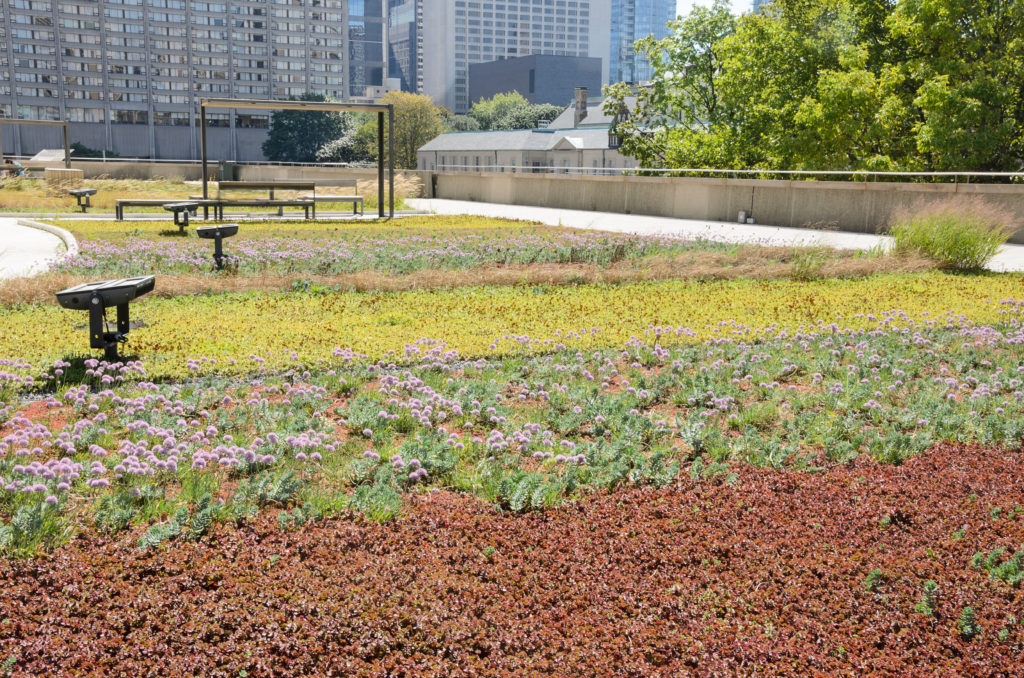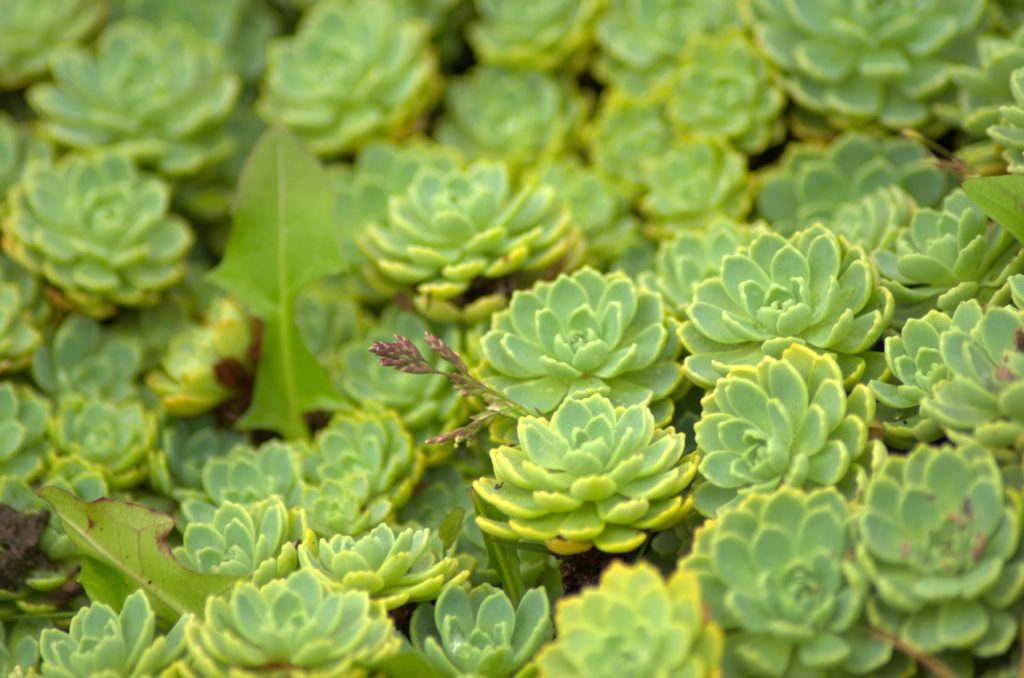By Rob Gray | Senior Technical Architect
Designing a green roof is a new experience for many like myself. Here is the story of my first green roof design.

The first step with something new is to collect information from the web and from people who have done it before. It is best to learn from other’s mistakes because you will not live long enough to make all possible mistakes yourself.
A green roof has two parts: a green garden and a roof that can survive with a green garden on top of it.
The first gardening choice is what type of plants. Trees are possible, but they are the most difficult. They are heavy and need three foot deep soil, so forget trees unless you have a huge strong roof and a huge budget. Flower gardens and vegetable gardens are possible, but they require a lot of on-going work and water. Flowers and vegetables need to be planted seasonally, weeded, watered and harvested, there can be bug problems, and deeper soil is needed. Flowers and vegetables are best for smaller raised planters on an accessible terrace. A large area of flowers and vegetables is called a farm, which is wonderful if you want a full-time farming job. A meadow of grasses and wildflowers would be beautiful. They need less work and watering, but still a significant amount of work. They need deeper soils because they have deeper roots.
Another issue to consider is fire. When plants dry out or die in the fall, they become a fire hazard. A GREEN roof is much safer.
What is the practical plant choice that ends up on most roofs? Little high desert plants called Sedums are the lowest maintenance plants that need the least water and soil. They come in a variety of colors and leaf shapes. They are mostly short, about 6 inches tall, and they have puffy waxy leaves to store water. They can create a colorful roof carpet. High desert means harsh dry conditions, large temperature swings, lots of wind, and poor rocky soils low in organic nutrients and water. It takes a tough little plant to survive. The environment on a roof has a lot in common with the high desert.

Sedums are not totally low maintenance, they need to be watered during long droughts. During the first two years a lot of gardening work needs to be done to establish a thriving Sedum garden.
The next problem is how to design and build the soil planting bed and the drainage. This is not a Do It Yourself residential project. It is a 2,000 square foot flat roof on a government building. The solution is to find the best manufacturers and contractors and design the project based on their systems. For the green garden and planting bed I got helpful information from the Landscape Architects at Furbish Company in Baltimore, MD. They have done a lot of experimenting (and mistakes) and have developed a successful proprietary soil mix and drainage system. The soil sits on top of bonded mineral wool insulation boards, which sit on plastic waffle drainage boards. Mineral wool is a dense and fire proof material like a heavy duty version of fiberglass. Mineral wool is the common insulation in Europe. The plastic waffle drainage boards are used to drain foundation walls. The planting beds are surrounded by 6 inch high metal or concrete curbs and paved walkways. This all applies to flat roofs with a slope of 1 inch in 12 inches.
If the roof is steeper than 2 inches in 12 inches, everything slides downhill fast. For steep green roofs up to vertical green walls, a structure is needed to hold pockets or trays of soil. This is a research project for another day.
The second problem is designing a roof to survive a green garden. Gardens are heavy, constantly wet, and those roots grow down into everything including rock. What do you think turns mountains into sand? Why, roots and freezing water. Of course, the roof has to hold the weight of the green roof, and that is what structural engineers are for. But what type of roof covering can last with a green roof in it? The answer is a hot applied rubber roof with polyester felt reinforcement. This is a modern version of the first natural tar roofs built 10,000 years ago. Hot rubber roofs are seamless, and they heal themselves around cracks and cuts when above 70 degrees. They can be permanently hold pools of water.
But hot rubber/ polyester felt roofs have weaknesses. Ultraviolet light and sunlight can damage them in six years, so they have to be covered with gravel or concrete and/or pavers. A top sheet of stone granule coated asphalt saturated felt can protect the rubber. Roots can grow into the rubber, so a heavy plastic root barrier is needed. Also, hot rubber roofs are only for flat roofs up to 1 inch in 12 inch slope, or the hot rubber will run downhill.
Over many years, the stretching from summer heat and shrinking from winter cold can pull a rubber roof apart.
This problem was solved in 1947 by Dow Chemical when they invented Styrofoam (Dow Trademark). This is also called XPS foam or extruded polystyrene foam. This XPS foam is waterproof and can be left out in the weather. The common “styrofoam” coffee cup is not made of Styrofoam (Dow Trademark). Coffee cups and food coolers are made of beadboard, which is expanded polystyrene foam beads pressed together while hot, also known as EPS foam.
A normal flat roof has a structural deck covered by insulation boards that are not waterproof, and a roof membrane over the top to keep the insulation dry. The 1947 invention of XPS foam, Styrofoam, by Dow Chemical allowed this normal roof to be turned upside down. The waterproof, weather proof XPS foam could be put on top of the roof membrane to protect it from temperature changes, from stretching and shrinking. The rubber roof membrane stays the same temperature as the inside of the building, even in Alaska in the winter. At first this was called an IRMA roof for Inverted Roof Membrane Assembly. Now it goes by the shorter name PMR for Protected Membrane Roof. Because it is protected from temperature changes and ultraviolet light, it can last a very long time. The first 60 year old PRM roofs are as good as new. The XPS foam also needs to be protected from ultraviolet light, so it needs to be covered by concrete, pavers, gravel or a green roof garden.
This PMR XPS foam and rubber membrane roof is the first choice for a roof system when designing a flat green garden roof. Several hot fluid applied rubber roof manufacturers offer a package that includes the green garden, the XPS foam and other parts like pavers and curbs.
Now I have to wait for my first green roof design to be bid and contracted and for construction to start in the Spring.

